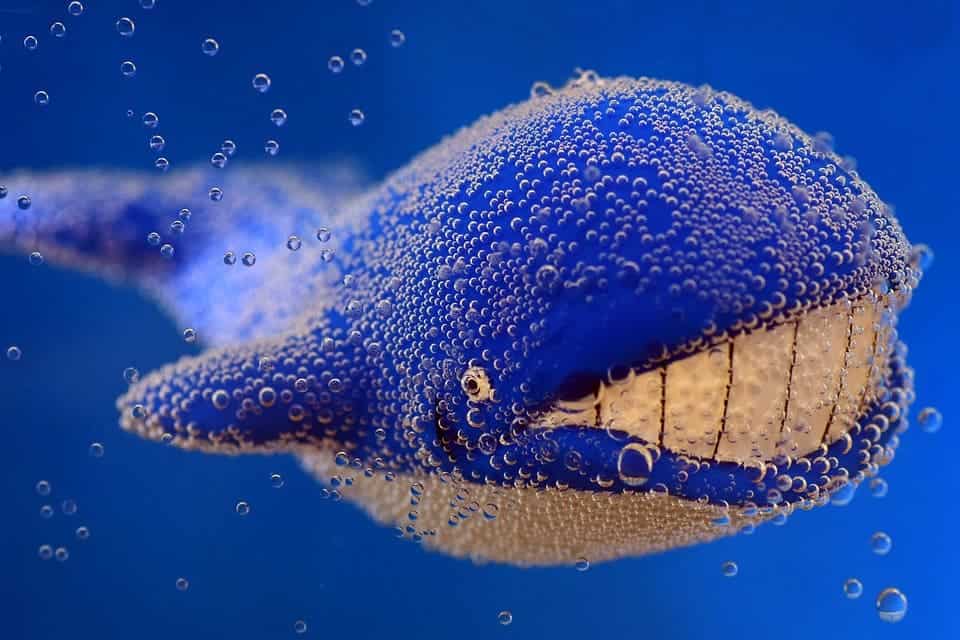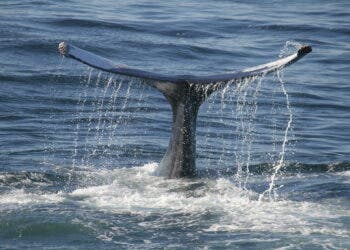A new study links the size of whale and dolphin brains to the complexity of the species’ cultural and social behavior. The research could help us better understand the interplay between our own brains and social development.

Whales and their smaller relatives, dolphins, have vibrant social lives. They form closely-knit social groups based on complex personal relationships and language that seems to include regional dialects (both dolphins and whales). Obviously, a certain degree of cerebral finesse would help to successfully maintain and navigate such communities, so a team led by Dr Keran Fox, a postdoc research fellow at Stanford University’s Department of Neurology and Neurological Sciences, set out to see how brain size relates to social complexity in different cetacean species.
The research team included scientists from the University of Manchester, the University of British Columbia, Canada, the London School of Economics and Political Science (LSE) and Stanford University, United States.
Bigger, better, brains
The paper presents the first large databank of cetacean brain sizes and social behaviors. The team compiled information on 90 different species of dolphins, whales, and porpoises, and overall found ample evidence that cetaceans exhibit complex social and cooperative behaviors similar to those seen in human culture and other primates. The list included traits such as:
- complex alliance relationships – working together for mutual benefit
- social transfer of hunting techniques – teaching how to hunt and using tools
- cooperative hunting
- complex vocalizations, including regional group dialects – ‘talking’ to each other
- vocal mimicry and ‘signature whistles’ unique to individuals – using ‘name’ recognition
- interspecific cooperation with humans and other species – working with different species
- alloparenting – looking after youngsters that aren’t their own
- social play
Furthermore, it establishes a strong link between these characteristics, brain size, and encephalization (an increase in the relative complexity of the brain). Their next step was to test the social brain hypotheses (SBH) and cultural brain hypothesis (CBH), two evolutionary theories that try to explain why some land species have developed unusually large brains, against the dataset. In broad lines, both hypotheses argue that certain species selected for bigger brains to navigate information-rich environments — such as living in a group and cooperation.
Dr Fox explains that although behavior exhibited by cetaceans is similar to that of certain land species, their brains are wired differently. This has led some researchers to believe they aren’t capable of higher cognitive processes, including social behavior. This was the first time either hypothesis had been tested against such a large database on marine mammals.
“I think our research shows that this is clearly not the case,” Dr Fox says.
The apparent co-evolution of cetaceans’ brains, their social structure, and cooperation behaviors represents a “striking parallel” to the hyper-social nature of humans and other primates on land, Shultz explains. This doesn’t mean we’re on the cusp of seeing a cetacean civilization brewing in the oceans “because they didn’t evolve opposable thumbs,” she adds.
“As humans, our ability to socially interact and cultivate relationships has allowed us to colonise almost every ecosystem and environment on the planet,” says Dr Susanne Shultz, an evolutionary biologist in Manchester’s School of Earth and Environmental Sciences and coresponding author of the paper. “We know whales and dolphins also have exceptionally large and anatomically sophisticated brains and, therefore, have created a similar marine based culture.”
“A new question emerges,” Dr Fox concludes. “How can very diverse patterns of brain structure in very different species nonetheless give rise to highly similar cognitive and social behaviours?”
The research gives us a more accurate image of the intelligence levels of whales and dolphins, but it also helps further our understanding of ourselves. In order to create a more general theory of why humans behave the way they do, we need to understand what sets us apart from other animals, says Dr Michael Muthukrishna, paper co-author and Assistant Professor of Economic Psychology at LSE.
“And to do this, we need a control group. Compared to primates, cetaceans are a more “alien” control group,” he concluded.
The full paper “The social and cultural roots of whale and dolphin brains” has been published in the journal Nature Ecology & Evolution.




